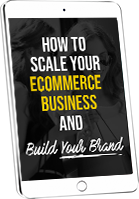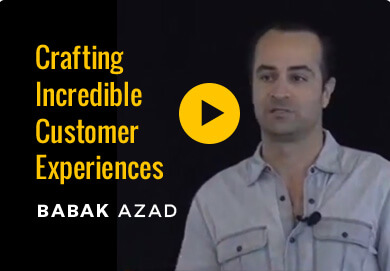Learning and modelling off of your competitors is something everyone should be doing.
Whether you are new to a field or a long-time player, anyone can benefit from seeing what others are doing, if only to spur some new ideas.
(Note, modelling and learning is different than flat-out plagiarism. There’s a fine line between “not reinventing the wheel” and copying word-for-word. Don’t be afraid to use others as a model, but just bring your own creativity or persona to it.)
For purposes of this article, I’m going to assume the business is a digital marketer, but the lessons apply everywhere.
What most people do when they conduct competitive research is that they go through someone else’s funnel in the same way that they assume a “normal” buyer would. They want to see what the buying experience is. And so they go and buy the product or service.
Totally makes sense and is logical. You’ll see some of the steps, see what types of offers they are making, and what the experience is of receiving the product or service.
But if that is all you are doing – essentially buying once from a competitor, the first time around – you’re missing out on additional valuable information.
In particular, here are 2 items to add:
- Don’t buy.
At least not right away.
It sounds really simple, but go thru the sales process, but don’t actually buy anything. In doing so, and this is assuming the marketer is at least halfway decent, you’ll start to see retargeting ads all over the web. Pay attention to what they look like, where they appear, what types of messaging and offers they include.
Also, again assuming the marketer has some level of sophistication, they will have a different set of emails that they send to buyers vs. non-buyers. And so by only buying, you miss out on all those non-buyer emails. Given that 95% of people who hit your site won’t convert, your ability to remarket to them is crucial. Most people only focus on banner / Facebook retargeting ads, but forget about email (on multiple levels). So go thru a competitor’s funnel and make sure you submit an email address. Then give it a week or two to see what you get hit with.
(Quick note, the easiest way to know which emails are for buyers and non-buyers is to use a feature in Gmail most people aren’t aware of. By simply adding “+” and whatever words you want, you essentially have an infinite number of email addresses to use, all hitting your inbox. For example, if your email is bob@gmail.com, then you can use bob+amazonbuyer@gmail.com and bob+amazonnonbuyer@gmail.com as your email addresses and those will all go to the same place. Then just set up a custom filter and custom label. The emails will end up with tags that will help you identify them quicker than seeing what the actual email address was as each email comes in).
By the way, this approach of not buying can easily be applied in the offline world. See what a sales rep does after you say no. How do they try to overcome objections? When do they call you back? Do they send emails. Clearly, there’s a lot more variability by sales rep in most companies, and it’s much costlier – both for you and for the other party – so much so that you may not want to do it. (Not to mention getting on someone’s list and receiving an email is much cheaper than having a sales rep call you back – I prefer not to do the latter, but you have to make your own decisions.)
My point is that research is research – it’s just the process and media that might be a bit different.
- Remember that the marketer might be testing something new.
Good marketers know that they need to be testing all the time. Unfortunately, you can’t know whether you’re in a test cell or in a control version of someone’s funnel. As such, you may be in an experience that they are testing out – buyer or non-buyer – and so need to keep a healthy sense of paranoia as you’re doing competitive research. You might even need to go thru it a couple times (as a buyer and non-buyer, depending on how good you think they are).
The reality is that you shouldn’t accept and immediately implement anyone’s funnel. You don’t know their business model inside and out. They may be optimizing for revenues, for breakeven, or for a metric that means nothing to you. Who knows? So that paranoia should be in place even if you knew for certain you were in a control experience. The point is to see some new things and then figure out how you might want to test for your business.
Neither one of these strategies is rocket science. Behave like a buyer as well as a non-buyer. You’re not looking for the info about a data set of 1. You’re looking for what the 100s and 1,000s of visitors to your site do. And then just be slightly paranoid because you be part of a test your competitor is running. Be thoughtful and careful about trusting that what you experience is actually working.
Just as you read books from folks you admire, to learn from the experience and wisdom, so too should you do what you can to learn from those around you in the marketplace.
What mistakes have you made or have you seen others make? Leave a comment below.







Leave a Reply
You must be logged in to post a comment.